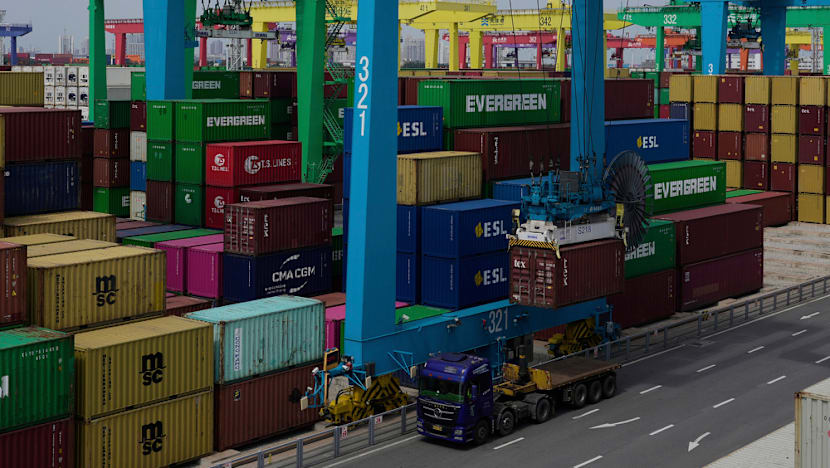World
China’s August Exports Slow to Six-Month Low Amid Trade Tensions

China’s export growth experienced a significant slowdown in August, reaching its lowest level in six months. Outbound shipments increased by only 4.4 percent year-on-year, falling short of the 5 percent forecast predicted by a Reuters poll. This decline follows a more robust 7.2 percent increase in July. The slowdown has raised concerns about the impact of ongoing trade tensions, particularly with the United States.
Despite the challenges, there is some relief for Chinese officials as demand from other markets remains relatively strong. Policymakers are strategizing to encourage manufacturers to diversify into regions beyond the US, especially in light of US President Donald Trump’s unpredictable trade policies. The hope is that this diversification will allow them to delay implementing further fiscal support measures in the upcoming fourth quarter.
Trade Dynamics and Economic Outlook
Customs data released on September 8, 2023, reported that imports into China grew by 1.3 percent in August, a decline from the 4.1 percent growth recorded in July. Economists expected a 3 percent rise in imports, indicating a broader context of weakening demand. According to Xu Tianchen, a senior economist at the Economist Intelligence Unit, the export figures are still “decent,” suggesting that the resilience of exports has persisted longer than anticipated.
The trade landscape is complicated by Trump’s tariffs, which pose a significant challenge to China’s export-driven economy. Analysts indicate that Chinese policymakers are hesitant to implement necessary reforms under external pressure. The US and China agreed on August 11, 2023, to extend their tariff truce for another 90 days, maintaining existing tariffs of 30 percent on Chinese imports and 10 percent on US goods. However, there are concerns about the sustainability of this truce and the potential for tariffs to escalate further.
In August, exports to the US plummeted 33.1 percent year-on-year. In contrast, shipments to Southeast Asian nations surged by 22.5 percent. This shift underscores the efforts by Chinese producers to redirect their exports towards Asian, African, and Latin American markets as a countermeasure against US tariffs. Nevertheless, no other market currently matches the US’s consumption capacity, which previously absorbed over US$400 billion of Chinese goods annually.
Future Prospects and Policy Responses
China’s trade surplus for August stood at US$102.3 billion, up from US$98.24 billion in June, although it remains below the US$114.7 billion recorded in that month. Analysts are closely monitoring whether the Chinese government will introduce additional fiscal support in the fourth quarter to stimulate domestic demand. Nonetheless, there appears to be a cautious approach regarding the flagship “cash-for-clunkers” program, as authorities have not rushed to replenish funds after local governments depleted their allocations.
The economic landscape for China remains fraught with uncertainties as the global trade environment evolves. With trade negotiations yielding minimal progress—evidenced by the recent visit of senior Chinese trade negotiator Li Chenggang to Washington—analysts emphasize the critical need for effective policy responses to navigate the ongoing challenges.
-

 Business5 months ago
Business5 months agoKenvue Dismisses CEO Thibaut Mongon as Strategic Review Advances
-

 Lifestyle4 months ago
Lifestyle4 months agoHumanism Camp Engages 250 Youths in Summer Fest 2025
-

 Sports4 months ago
Sports4 months agoDe Minaur Triumphs at Washington Open After Thrilling Comeback
-

 Sports5 months ago
Sports5 months agoTupou and Daugunu Join First Nations Squad for Lions Clash
-

 Top Stories5 months ago
Top Stories5 months agoColombian Senator Miguel Uribe Shows Signs of Recovery After Attack
-

 World5 months ago
World5 months agoASEAN Gears Up for Historic Joint Meeting of Foreign and Economic Ministers
-

 Health4 months ago
Health4 months agoNew Study Challenges Assumptions About Aging and Inflammation
-

 Business5 months ago
Business5 months agoOil Prices Surge Following New EU Sanctions on Russia
-

 Entertainment4 months ago
Entertainment4 months agoDetaşe-Sabah Violin Ensemble Captivates at Gabala Music Festival
-

 Entertainment4 months ago
Entertainment4 months agoBaku Metro Extends Hours for Justin Timberlake Concert
-

 Top Stories5 months ago
Top Stories5 months agoRethinking Singapore’s F&B Regulations Amid Business Closures
-

 Business5 months ago
Business5 months agoU.S. House Approves Stablecoin Bill, Sends to Trump for Signature









